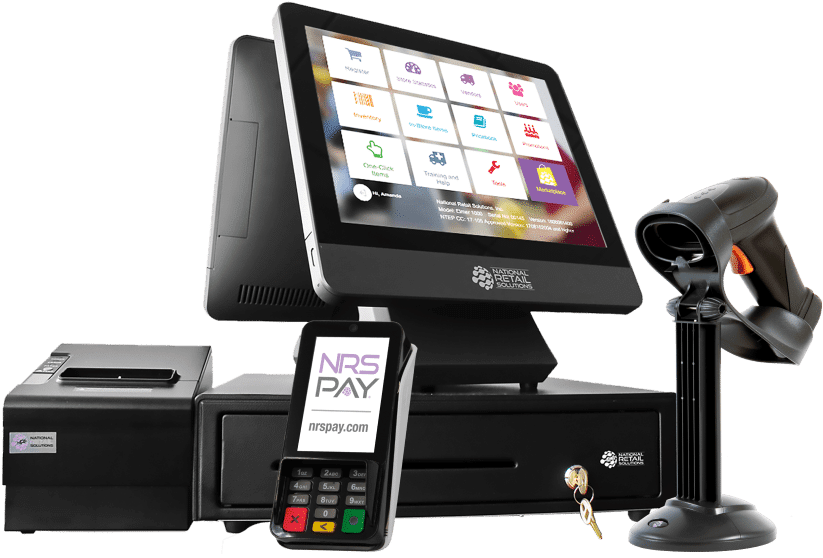In the fast-paced world of point-of-sale (POS) systems, performance and reliability are everything. These systems, used in retail stores, restaurants, and other businesses, rely heavily on printed circuit boards (PCBs) to process transactions, manage data, and ensure smooth operations. But not all PCBs are created equal. Choosing the right PCB substrate materials can make or break the performance of a POS system. If you're looking for the best materials to optimize thermal conductivity, signal integrity, and durability, you've come to the right place. In this blog, we'll dive deep into advanced PCB materials, explore FR-4 alternatives, and guide you through selecting substrates for high-frequency applications, all tailored for POS systems.
Why PCB Substrate Materials Matter for Point-of-Sale Systems
POS systems operate in demanding environments. They handle high-speed data transfers, endure constant use, and often face fluctuating temperatures. The substrate material of a PCB—the foundation that supports the circuitry—plays a critical role in meeting these challenges. A poor choice of substrate can lead to signal loss, overheating, or even system failure, costing businesses time and money.
The key properties to consider when selecting PCB substrate materials for POS systems include the dielectric constant (Dk), thermal conductivity, and overall durability. A material with a low dielectric constant ensures better signal integrity for high-frequency operations, while high thermal conductivity helps dissipate heat effectively. In the sections below, we'll break down these properties and explore how different materials, including FR-4 and its alternatives, stack up for POS applications.

Understanding Key Properties of PCB Substrate Materials
Before diving into specific materials, let's cover the essential characteristics that define a substrate's performance. These properties directly impact how a PCB functions in a POS system.
Dielectric Constant (Dk)
The dielectric constant measures a material's ability to store electrical energy in an electric field. For POS systems, where high-speed data processing is common, a lower dielectric constant is often preferred. Why? A lower Dk reduces signal delay and minimizes crosstalk between traces, ensuring faster and more accurate data transmission. For example, while standard FR-4 has a Dk of around 4.5, some advanced materials can achieve a Dk as low as 3.0 or below, significantly improving performance in high-frequency applications.
Thermal Conductivity of PCB Materials
Thermal conductivity refers to a material's ability to transfer heat. POS systems often generate heat due to continuous operation and power-intensive components. If the PCB substrate can't dissipate heat effectively, components may overheat, leading to reduced lifespan or failure. Materials with high thermal conductivity, measured in watts per meter-kelvin (W/m·K), are ideal. For instance, standard FR-4 offers a thermal conductivity of about 0.3 W/m·K, while some ceramic-based substrates can reach up to 30 W/m·K or higher.
Dissipation Factor (Df)
The dissipation factor indicates how much signal energy a material loses as heat. A lower Df is crucial for high-frequency PCB materials used in POS systems, as it minimizes signal loss. Advanced substrates often have a Df below 0.005, compared to FR-4's typical Df of 0.02, making them better suited for applications requiring precision.
Coefficient of Thermal Expansion (CTE)
The CTE measures how much a material expands or contracts with temperature changes. A mismatch between the CTE of the substrate and other components can cause mechanical stress, leading to cracks or delamination. Materials with a CTE close to that of copper (around 17 ppm/°C) are ideal for maintaining structural integrity in varying temperatures.

FR-4: The Standard Choice and Its Limitations
FR-4 is the most widely used PCB substrate material, known for its affordability and versatility. Made from woven fiberglass and epoxy resin, it offers decent mechanical strength and a dielectric constant of about 4.5 at 1 MHz. For many POS systems, FR-4 works well for basic applications with moderate speed and power requirements.
However, FR-4 has limitations. Its thermal conductivity is low (around 0.3 W/m·K), making it less effective for heat dissipation in high-power POS devices. Additionally, its dielectric constant and dissipation factor aren't ideal for high-frequency operations, where signal integrity is critical. As POS systems evolve to handle faster transactions and wireless connectivity, engineers often look for FR-4 alternatives that offer better performance.
Exploring FR-4 Alternatives for Enhanced Performance
For POS systems that demand higher performance, several advanced PCB materials outperform FR-4. Let's explore some popular FR-4 alternatives and their benefits.
High-Frequency PCB Materials
High-frequency PCB materials are designed for applications where signal speed and integrity are paramount. These materials typically have a lower dielectric constant and dissipation factor, making them ideal for POS systems with wireless communication or high-speed data processing.
- PTFE-Based Materials: Polytetrafluoroethylene (PTFE) substrates offer a dielectric constant as low as 2.1 and a dissipation factor of 0.0009 at 10 GHz. They're excellent for high-frequency applications but can be more expensive and harder to process than FR-4.
- Hydrocarbon Ceramic Laminates: These materials provide a Dk of around 3.0 and better thermal stability than FR-4. They're a good middle ground for POS systems needing high-frequency performance without the high cost of PTFE.
Ceramic Substrates for Superior Thermal Conductivity
Ceramic-based substrates, such as alumina or aluminum nitride, are known for their exceptional thermal conductivity, often ranging from 20 to 30 W/m·K. This makes them perfect for POS systems with high-power components that generate significant heat. While ceramics are more costly and brittle than other materials, their ability to manage heat can extend the lifespan of critical components.
Polyimide for Flexibility and Durability
Polyimide substrates are flexible and highly durable, with good thermal stability up to 260°C. They're often used in compact POS devices where space is limited, and the PCB may need to bend or fit into tight enclosures. Polyimide also offers a dielectric constant of around 3.5, making it suitable for moderate high-frequency applications.

Selecting the Right Substrate for Point-of-Sale Systems
Choosing the best PCB substrate for a POS system depends on several factors, including the specific application, budget, and performance requirements. Here's a step-by-step guide to help you make an informed decision.
Step 1: Assess Operating Conditions
Consider the environment where the POS system will operate. Will it face high temperatures, humidity, or constant vibrations? For harsh conditions, opt for materials like polyimide or ceramics that offer durability and thermal stability.
Step 2: Evaluate Signal Speed Needs
If your POS system processes high-speed transactions or supports wireless connectivity, prioritize high-frequency PCB materials with a low dielectric constant and dissipation factor. PTFE-based or hydrocarbon laminates are excellent choices for maintaining signal integrity at frequencies above 1 GHz.
Step 3: Analyze Power and Heat Requirements
For systems with power-hungry components, thermal conductivity is critical. Ceramic substrates can handle heat dissipation far better than FR-4, preventing overheating and ensuring long-term reliability.
Step 4: Balance Cost and Performance
While advanced materials offer superior performance, they often come at a higher cost. If budget is a concern, consider hybrid designs that use FR-4 for less critical layers and advanced materials only where high performance is needed.
Real-World Applications in POS Systems
To illustrate the importance of substrate selection, let's look at a few scenarios where material choice directly impacts POS performance.
In a busy retail store, a POS system processes hundreds of transactions per hour, often using wireless communication for credit card payments. Here, a high-frequency PCB material with a dielectric constant below 3.0 ensures minimal signal loss, allowing for fast and reliable data transfer.
In a restaurant kitchen, POS devices may be exposed to heat and humidity. A ceramic substrate with high thermal conductivity (e.g., 25 W/m·K) can prevent overheating, even during peak hours when the system is under heavy load.
For portable POS terminals used by delivery drivers, flexibility and durability are key. A polyimide-based substrate can withstand bending and rough handling while maintaining performance in a compact design.
Future Trends in PCB Materials for POS Systems
As POS technology continues to evolve, so do the materials used in PCBs. Emerging trends include the development of eco-friendly substrates made from bio-based resins, which aim to reduce environmental impact without sacrificing performance. Additionally, advancements in composite materials are leading to substrates that combine the best properties of multiple materials, such as high thermal conductivity and low dielectric constant, at a lower cost.
Another area of innovation is in materials for 5G-enabled POS systems. With the rollout of 5G, POS devices will need to handle even higher frequencies, pushing the demand for substrates with ultra-low dielectric constants and minimal signal loss.
Conclusion: Building Better POS Systems with the Right PCB Materials
Selecting the right PCB substrate materials is a critical step in designing high-performance point-of-sale systems. Whether you're dealing with high-speed data, intense heat, or challenging environments, understanding the properties of materials like FR-4 and its alternatives can help you make the best choice. From the dielectric constant to the thermal conductivity of PCB materials, each factor plays a role in ensuring reliability and efficiency.
By considering the specific needs of your POS application—whether it's signal integrity for high-frequency operations or heat dissipation for power-intensive setups—you can optimize performance and extend the lifespan of your systems. As technology advances, staying informed about new materials and trends will keep your designs ahead of the curve. With the right substrate, your POS systems can deliver seamless transactions and satisfied customers every time.
 ALLPCB
ALLPCB







